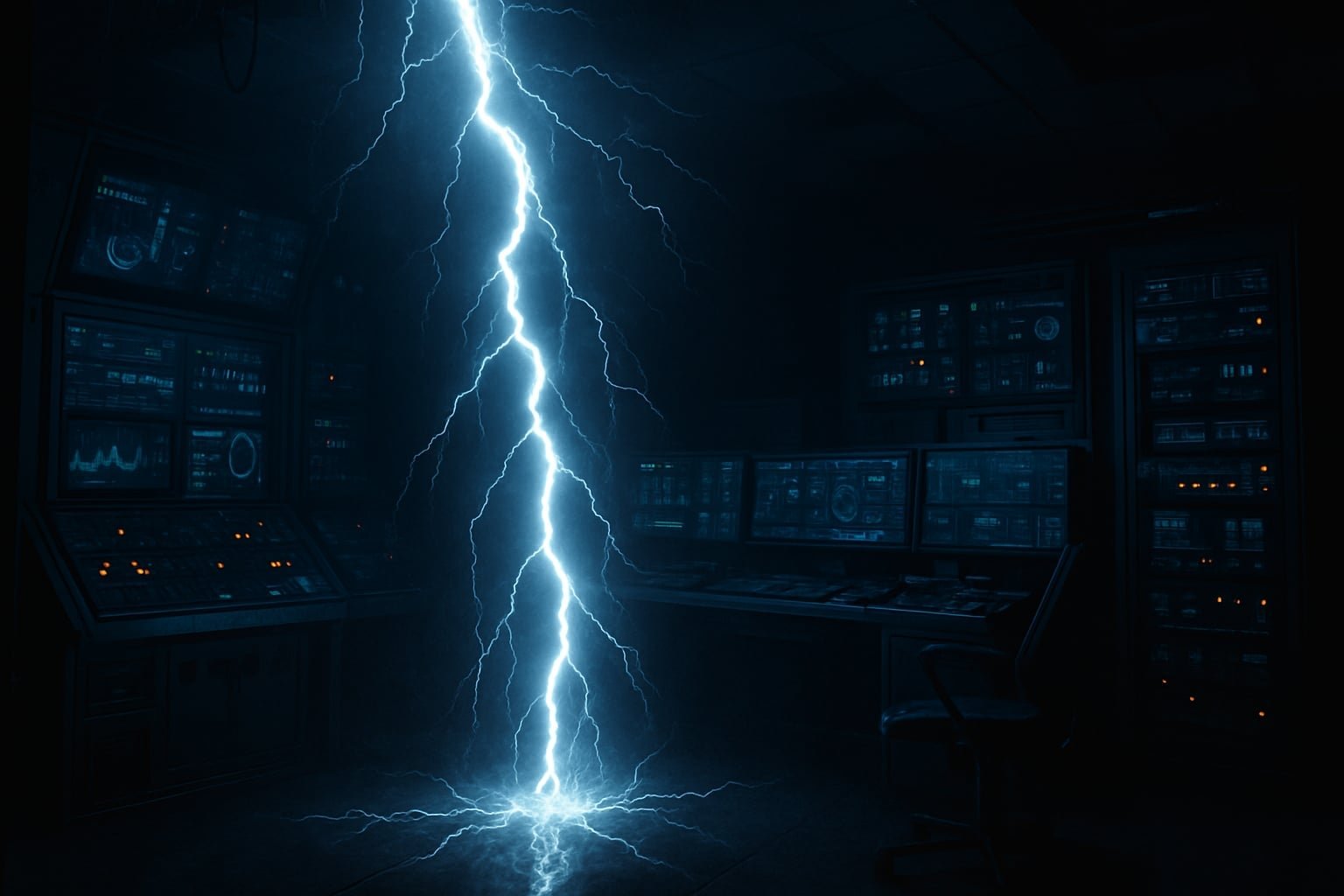Metal structures don’t flinch. Control panels can’t blink. Sensors never scream. Yet every bolt of lightning speaks directly to them. It moves faster than protocols, stronger than surge ratings, and far beyond any human reflex. Once it enters a facility, calculation ends and consequences begin. Lightning risk management is the only countermeasure that exists before that moment.
What Term Really Implies
Managing lightning risk is not a response. It’s architecture. It builds from the ground grid up and travels through shielding, bonding, modeling, and calibration. It does not ask whether lightning might strike. It accepts that it will and models what happens when it does.
No two structures carry the same exposure. A cement silo, an off-grid solar array, a copper-rich data vault—each holds unique paths for entry and escape. And lightning, indifferent to purpose, always seeks the lowest impedance with the highest gain.
Numbers, Not Notions: Role of Calculation
Every successful strategy in lightning risk management begins with lightning risk calculation. A facility without that number operates in fiction.
The calculation includes:
- Ng (Ground flash density): Flashes per square kilometer per year
- Ac (Collection area): Based on structural height and footprint
- P (Probability): Strike likelihood and exposure time
- L (Loss factors): Quantifying injury, equipment damage, and downtime
- RT (Risk threshold): Acceptable limit for a site’s configuration
These values don’t float. They root in topography, soil resistivity, material conductivity, equipment layout, and human presence. Every decimal has consequence.
Assessment Without Assumption
To move forward, facilities require a lightning risk assessment anchored in method, not memory. One technician’s experience cannot predict atmospheric discharge. Risk cannot be guessed by glancing at rooftop rods.
Assessment should begin with questions few ask:
- Which cables act as hidden conductors during surge events?
- Where does equipotential bonding break down inside service shafts?
- How many SPDs protect ground loops rather than critical assets?
- Is grounding designed for transient events or only power faults?
If these cannot be answered with diagrams and data, the site remains vulnerable.
Patterns of Failure Start Small
The strike doesn’t always melt steel or trigger alarms. It may introduce a transient voltage that arcs through a cable shield, weakens insulation, shifts calibration. One relay misfires. Then another. Over time, logic decays inside systems built for precision.
When technicians review the logs, the moment passes unnoticed. The pattern becomes clear only after repetition. By then, the damage costs more than protection would have.
Misplaced Confidence in Outdated Protection
Some sites still rely on vertical air terminals without testing soil resistivity. Others install high-capacity surge devices on low-risk circuits while leaving long exposed runs unprotected. This is not management. It is mythology, wrapped in metal.
Protection hardware must be specified only after full lightning risk assessment. Without that, even the best devices fail in application.
Industrial Zones and Risk Multiplication
Facilities in industrial clusters carry compound risks:
- Metallic networks link buildings
- Shared grounding systems introduce differential potential
- Open yard equipment lacks structural shielding
- Multi-story machinery elevates surge points beyond modelled safe zones
- SCADA and automation systems stretch across structures with no isolation buffer
Here, one strike rarely affects just one site.
Human Risk Hides in Margins
Beyond machines, lightning reaches the edge where people intersect with exposed systems. Ladder access near metallic walls. Control rooms near cable vaults. Temporary structures with minimal grounding. These become the invisible danger zones. Every person in a high-voltage environment inherits exposure the moment they touch a poorly bonded surface.
Management That Begins Before the Storm
Lightning risk management is not about fixing. It’s about positioning. It arranges pathways before energy arrives. It chooses where current flows, how it exits, what it avoids. This requires:
- Conductive zoning: Defining LPZ boundaries with proper bonding and shielding
- Earth termination planning: Correct depth, resistance, and layout across soil types
- Conductor route analysis: Mapping cabling paths for inductive loop avoidance
- Surge grading: Class I, II, III coordination across power and data systems
- Regular audit cycles: Not inspection. Reassessment. Every structural or equipment change alters risk
Regulatory Silence Does Not Equal Safety
Some regions lack mandates on lightning protection. That absence should never be taken as immunity. Insurance audits, legal claims, and operational failures do not care about regional codes. A facility either managed risk or it did not. After impact, that question turns binary.
Software Has Replaced Guesswork
Modern platforms built for lightning risk calculation now replace old spreadsheets and assumptions. They simulate site geometry, grounding topology, and event propagation through layered systems.
One such system runs thousand-point models across large installations, ranking risk zones with predictive analytics. Outputs allow managers to cut wasted investment and direct action to where loss probability meets impact severity. That model feeds cost-efficiency. It protects revenue more than just hardware.
When Calculation Ends, Control Begins
After assessment, the path splits. One route installs layered protection, verifies bonding integrity, documents thresholds, and trains response teams. The other route waits. And when a strike arrives, it scrambles.
The companies that invest in risk management don’t just prevent failure. They predict where lightning will test their infrastructure. And they answer with current redirection, not emergency repairs.
Conclusion Is Just Beginning
Lightning speaks a language of charge, current, and resistance. Facilities that respond in that language survive intact. The others misinterpret the silence before the storm as safety. Management lives in preparation, not reaction. Every discharge writes a story. The only question is who wrote the first chapter—the lightning, or the facility’s engineers.


